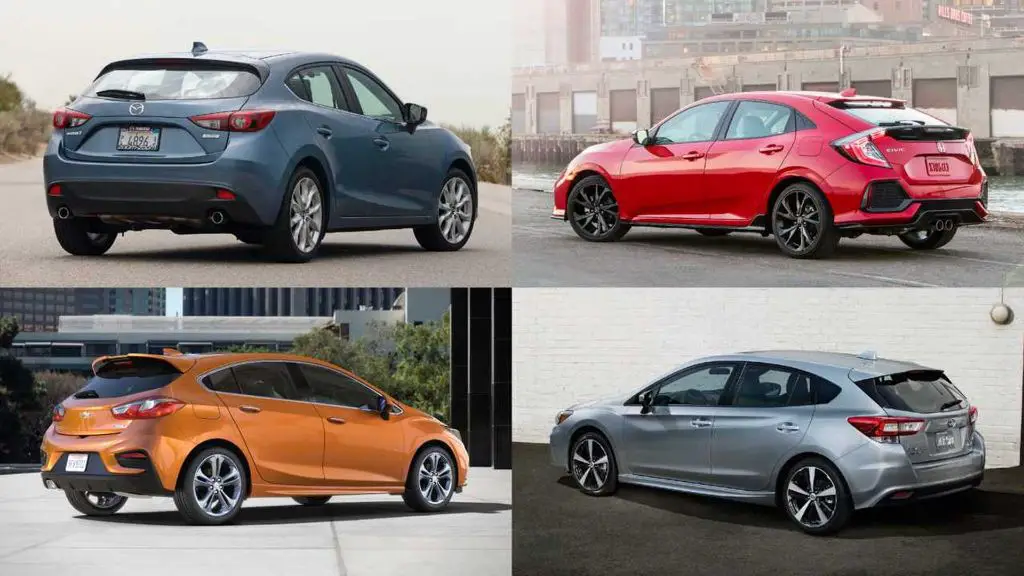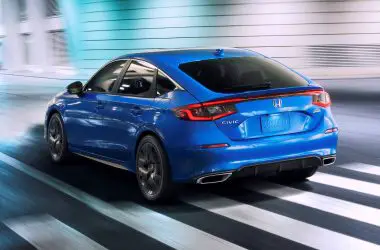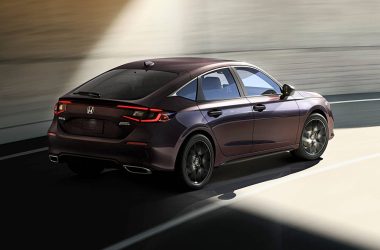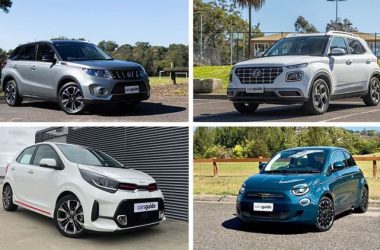This article will cover the top hatchback cars that provide ample cargo space to transport larger items. A hatchback is a car body style that typically has a rear door that opens upward to access a cargo area. Hatchbacks provide much more cargo capacity than a traditional sedan trunk while still offering a smaller and more efficient size than an SUV. For those needing to fit bulkier items and luggage for weekend trips or errands, a hatchback can offer the perfect versatile solution.
Honda Fit
The Honda Fit is known for its spacious cargo area despite its small size. With the rear seats up, it provides 16.6 cubic feet of cargo volume.
One key feature of the Fit is its Magic Seat that folds completely flat, expanding the cargo space to 52.7 cubic feet. This allows you to fit large and bulky items that typically wouldn’t fit in a subcompact hatchback.
The low cargo floor and wide hatch opening also make it easy to load items in and out. Overall, the Honda Fit punches above its weight class when it comes to cargo versatility for a small hatchback.
Toyota Prius
The Toyota Prius is known for its fuel economy, but it also provides ample cargo space. According to Toyota, the Prius LE has 23.8 cubic feet of cargo volume behind the rear seats. The XLE and Limited trims offer 20.3 cubic feet of space1. With the rear seats folded down, cargo capacity expands to 27.4 cubic feet in the LE and 50.7 cubic feet in other trims.
Reviewers praise the Prius for its spacious rear cargo area that can easily fit a couple golf bags or several suitcases. The wide opening and flat floor make loading bulky items relatively easy. The Prius provides more cargo versatility than many small hatchbacks thanks to the generous dimensions.
Volkswagen Golf Sportwagen
The Volkswagen Golf Sportwagen provides ample cargo space for a compact wagon. With the rear seats up, it has 30.4 cubic feet of cargo volume. Fold the 60/40 split rear seats down and it expands to a maximum of 66.5 cubic feet (https://cars.usnews.com/cars-trucks/volkswagen/golf-sportwagen/interior). The cargo area is over 6 feet long, allowing you to fit larger items. The Golf Sportwagen also has a unique fold-flat front passenger seat to accommodate especially long cargo (https://www.palmetto57vw.com/the-2019-volkswagen-golf-sportwagen-what-you-need-to-know/). This feature gives you extra versatility when transporting bulky items.
Kia Soul
The Kia Soul is a top choice for maximizing cargo space thanks to its boxy shape and fold-flat rear seats. The Soul has 24.2 cubic feet of cargo room behind the rear seats, expanding to 62.1 cubic feet with the seats folded down flat [1]. The cargo floor is also flat, making it easy to load large items. In terms of interior dimensions, the Soul has 40.2 inches of front headroom and 39.1 inches in the rear, along with front legroom of 41.1 inches and rear legroom of 36.4 inches [2]. So you can comfortably fit both cargo and passengers.
Mini Clubman
The Mini Clubman provides excellent cargo volume for a hatchback. According to 2023 MINI Cooper Clubman Interior, Cargo Space & Seating – US News, the Clubman has 17.5 cubic feet of cargo space behind its rear seats.
One of the Clubman’s standout features is its split rear doors, which open in a double-door style to allow easy loading into the cargo area. As Mini notes on their website, “Split rear doors make loading especially easy. The cargo area is spacious and square thanks to its rectangular tail lights.” The split rear doors give the Clubman excellent practicality and accessibility for a hatchback.
Subaru Impreza
The Subaru Impreza hatchback offers excellent cargo capacity thanks to its practical design. According to US News, the Impreza has 20.8 cubic feet of cargo space behind the rear seats. With the 60/40 split folding rear seats folded down, cargo capacity expands to 55.3 cubic feet.
The Impreza comes standard with a roof rack, allowing drivers to transport even more gear on the roof. The roof rack has removable crossbars that can extend the carrying capacity. Inside, the 60/40 split folding rear seats fold nearly flat to accommodate large and bulky items.
Mazda 3
The Mazda 3 hatchback offers excellent cargo space and versatility thanks to its large rear cargo area. According to Eldorado Mazda, the 2024 Mazda 3 hatchback has 20.1 cubic feet of cargo volume behind the rear seats. This expands to 47.1 cubic feet with the rear seats folded down. In a comparison test by MotorTrend, they found the Mazda 3 hatchback’s cargo space to be slightly less than the Volkswagen Golf at 52.7 cubic feet, but more than the Honda Civic hatchback’s 46.2 cubic feet.
The Mazda 3 hatchback’s versatile cargo area is thanks in part to its 60/40 split folding rear seats. As noted by Autoblog, lowering the rear seats opens up a wide, flat cargo floor. This makes it easy to fit larger, bulkier items. The wide rear hatch opening also enables fitting bigger cargo. Overall, the Mazda 3 hatchback provides ample cargo space for daily use and most cargo hauling needs.
Honda Civic
The Honda Civic hatchback is a top choice for its impressive cargo space and versatility. With the rear seats in place, it offers 25.7 cubic feet of cargo volume. While the sedan has a tight trunk, the Civic hatchback can easily fit multiple suitcases or a week’s worth of groceries. The 60/40 split folding rear seats also fold completely flat to maximize space. According to Honda, with the rear seats folded down, the Civic hatchback provides up to 61.3 cubic feet of cargo volume. This makes the Civic hatchback’s cargo space comparable to many small SUVs. Customers looking to haul bulky or oversized items will appreciate the large hatchback opening and flat load floor.
The new 2022 and 2023 Civic hatchback models have increased cargo space compared to previous generations. For example, the 2021 Civic hatch had 25.7 cubic feet behind the rear seats and 46.2 cubic feet with the seats folded down. So the latest Civic hatchbacks have gained 2-3 cubic feet of added cargo room. With ample space for passengers and their belongings, the practical Honda Civic hatchback is a top pick for shoppers wanting a compact car that can handle sizable cargo needs.
Conclusion
When looking for a hatchback with ample cargo space, there are several excellent options to consider. The models we covered – including the Honda Fit, Toyota Prius, Volkswagen Golf Sportwagen, Kia Soul, Mini Clubman, Subaru Impreza, Mazda 3, and Honda Civic – all provide versatile hatchback cargo capabilities.
The key factors that determine cargo capacity in a hatchback are overall interior volume, maximum cargo space with rear seats folded down, and cargo space behind the rear seats. Hatchbacks like the Honda Fit, Kia Soul, Volkswagen Golf Sportwagen and others on our list offer 50+ cubic feet of space with rear seats folded, and over 20 cubic feet behind the rear seats.
For hauling larger items, look for hatchbacks with wider cargo openings and flat load floors, like the Honda Fit and Kia Soul. The Toyota Prius, Mini Clubman, Subaru Impreza and others provide a surprising amount of versatile cargo space in compact hatchback models. With ample room for passengers and driver comfort, these hatchbacks are great options for carrying both people and cargo efficiently.





